Oil and vinegar based salad dressings are some of the most common types of dressings. Simple and classic, this flavorful combination has been used since Ancient Greek and Roman times as a way to season and dress vegetables and greens. Despite their relative ease to make, bottled salad dressings have become increasingly popular since their introduction in the 1940s. But what salad dressing ingredients are in these bottles, and is the convenience of bottled dressings really worth it?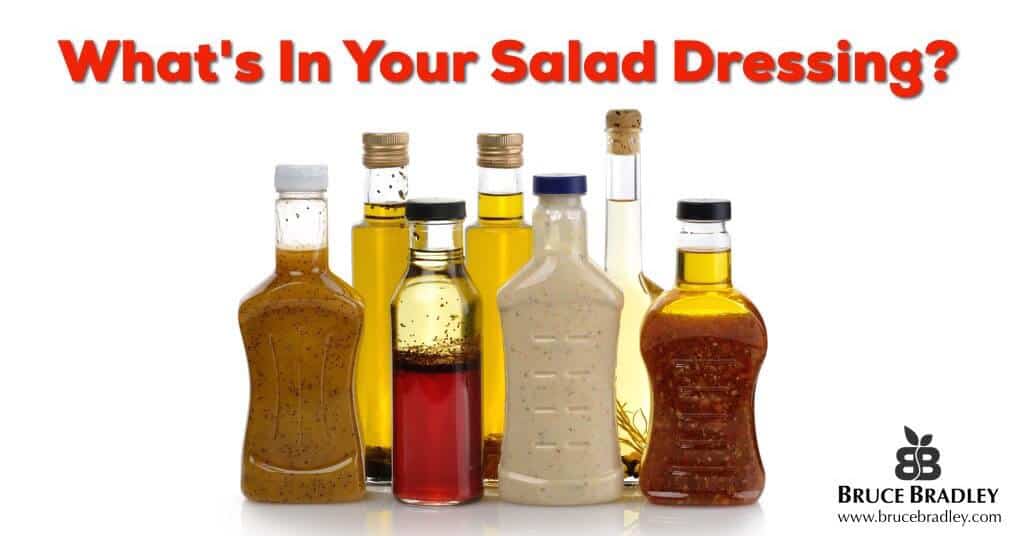
Salad Dressing Ingredients—What’s In Your Oil and Vinegar Dressing?
If you’ve shopped for bottled, non-refrigerated salad dressings lately you’ve experienced the overwhelming nature of this category firsthand. With approximately $2 Billion in annual retail sales 1 the salad dressing aisle goes on and on with a seemingly endless number of varieties. While ranch dressings are the most popular flavor segment, oil and vinegar based dressings are also big sellers. And even within the oil and vinegar segment, there are tons of options including different flavor profiles, full fat, fat-free, light, and most recently organic.
To help illustrate what’s in these oil and vinegar based salad dressing, I’ve assembled a list of salad dressing ingredients for several popular brands below:
8 Areas of Concern with Oil and Vinegar Salad Dressing Ingredients:
If you’ve ever made a vinaigrette or Italian dressing you probably know that homemade versions usually have 5-8 ingredients. In contrast, the store-bought, shelf-stable varieties typically have two to three times the number of ingredients. And within those ingredients I observed 8 areas of concern:
- Cheap, highly processed oils are one way food companies make more profits selling bottled salad dressings. A high-quality olive oil can cost more than 10 times as much as the cheap, industrial soybean and canola oils used in these dressings. While these cheaper oils may also have a longer shelf-life, they’ve typically undergone an incredible amount of processing including chemical extraction and refining that has not only stripped them of their nutritional benefits but also introduced potentially toxic processing aids like hexane.
- Water isn’t toxic, but have you ever wondered what it’s doing in bottled salad dressings? Most bottled brands of oil and vinegar salad dressings list water is the first or second ingredient. But if you get out any cookbook, I challenge you to find a vinaigrette or Italian dressing recipe that calls for water. So why do these store-bought versions use water? IT’S A SUPER CHEAP INGREDIENT. And to get away with adding water in the salad dressing, food companies mix in other additives to improve the mouthfeel and flavor of the end product.
- Stabilizers, gums, thickeners, and emulsifiers like Xanthan gum are added to offset the added water. And in the case of fat-free or low-fat dressings, even more emulsifiers are used to replace the mouthfeel of the oils. While these additives have historically been thought to be fairly innocuous, new research is calling into question what this class of additives may be doing to the gut microbiota in our intestinal tract. 2
- Sweeteners are used occasionally in most homemade dressings, but why have sugar and high fructose corn syrup have become so commonplace in many store-bought dressings? Well, when you’re using lots of water, cheap oils, and cheap kinds of vinegar, added sweeteners are a profitable way to add flavor. And watch out—in the “light” varieties of dressings, chemically processed stevia and even artificial sweeteners are sometimes being used.
- Artificial colors like caramel color, Yellow 5, and Yellow 6 are added to many bottled dressings. Again, when you’ve got a lot of water and cheap, relatively colorless oils in your formula, artificial colors are one way to get the bottled dressing to look more appealing.
- Preservatives are tough to avoid when food manufacturers are trying to achieve shelf lives of 12-24 months with their packaged foods. While there’s some debate over the safety of preservatives like sodium benzoate and calcium disodium EDTA, in general, I consider them processed food “canaries in the coal mine” and choose to stay away from them.
- GMOs are most likely in all bottled salad dressings except those labeled organic or non-GMO certified. Ingredients like soybean oil, canola, sugar, high fructose syrup, maltodextrin, modified cornstarch, and xanthan gum are usually made from GMO crops.
- Sodium levels in store-bought dressings can be extremely high. For example, Wish Bone’s Fat-Free Italian dressing has 340mg in one serving (2 tablespoons). That’s about 7 times the amount in many homemade recipes. Why? Lots of water, cheap oils, less flavorful kinds of vinegar, and other shelf stable ingredients need lots of salt to deliver more flavor.
Recommendations: 4 Tips for choosing a bottled oil and vinegar salad dressing:
In general, I recommend avoiding bottle dressings altogether. Homemade salad dressings are super easy to make, extremely flavorful, better for you, and very affordable. But if you’re not convinced or just not ready to take that step yet, here are a few pieces of advice:
- Avoid fat-free dressings. I know some of you may be saying, “What the heck?”—especially if you were an adult during the “fat-free” craze of the 90’s. I honestly believe the ingredient tradeoff for “fat-free” processed foods is just too high. They simply aren’t worth it. Although I don’t consider fats healthy, small portions of minimally processed fats like extra virgin olive oil are part of a balanced diet.
- Look for higher quality ingredients like extra virgin olive oil, flavorful kinds of vinegar, and no added water.
- Watch the sodium and sugar levels. To be honest it’s almost impossible to avoid added sweeteners and tons of salt in bottled dressings. But if you’re unwilling to give up packaged dressings, compare brands and be very aware of the amount of sugar and salt that’s in your purchase. This may be tough to find, but I’d shoot for options with less than 1.5g of sugars and less than 200mg of sodium per 2 tablespoon serving.
- Organic varieties are sometimes a better choice that enable you to avoid GMOs and some cheap ingredients. Just be aware that even organic dressings can use gums, thickeners, sweeteners, and lots of salt.
And to Really Know Your Salad Dressing Ingredients! Make Your Own Dressing!
Do you need some help making a break from bottled dressing routine? Well, then you’re in luck! Over the next few months, we’ll be sharing some of our favorite salad dressing recipes. And the really good news is you won’t need to wait very long since my next post will be all about my absolute favorite … the BEST EVER Italian Salad Dressing. So stay tuned!
What’s your opinion of bottle salad dressing ingredients? Safe or scary? Do you still use bottled dressings or did you kick them to the curb a while back? If you’re interested in a particular salad dressing recipe or have one to share, feel free add it to the comments below!
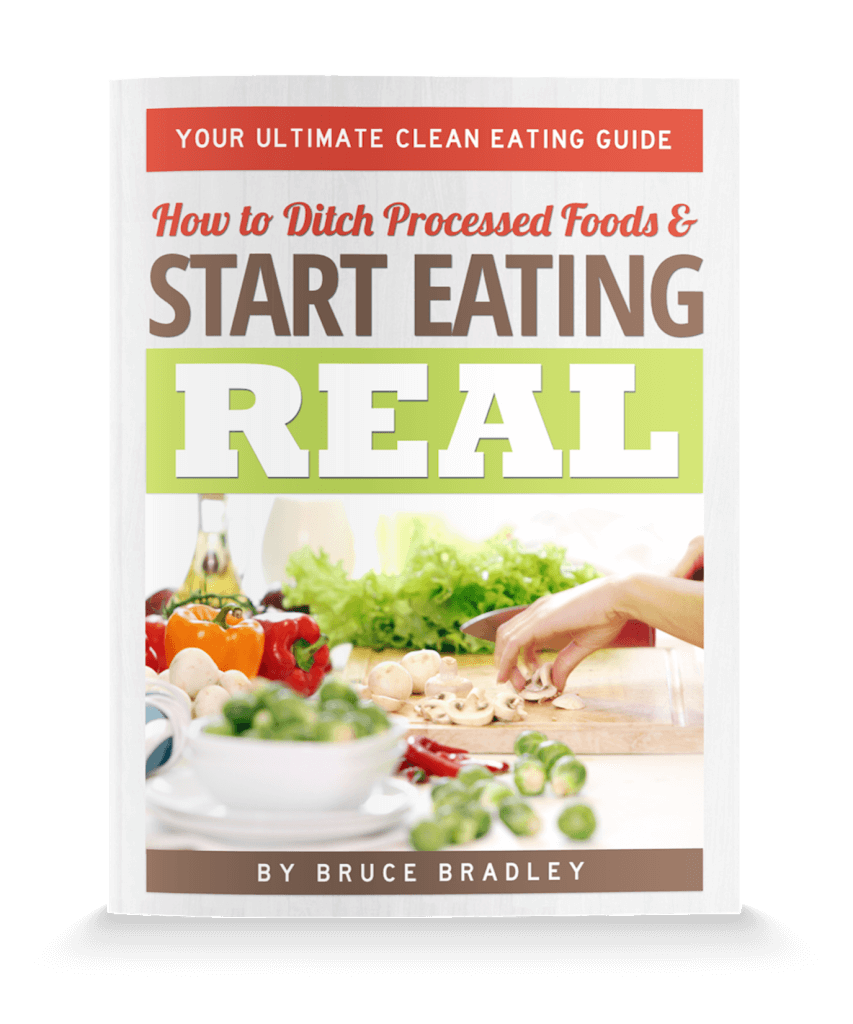
GET MY FREE BOOK NOW!
End the confusion! Learn what’s really in your food and how to take simple steps toward eating healthier!
EAT HEALTHIER TONIGHT!
If you enjoyed this article or recipe may I ask you a favor? Please share it with a friend. Why? Because together we can make a difference and help each other live happier and healthier lives. Thank you!
Notes:
- ACNielsen 2013 ↩
- How Emulsifiers Are Messing with Our Guts (and Making Us Fat) ↩

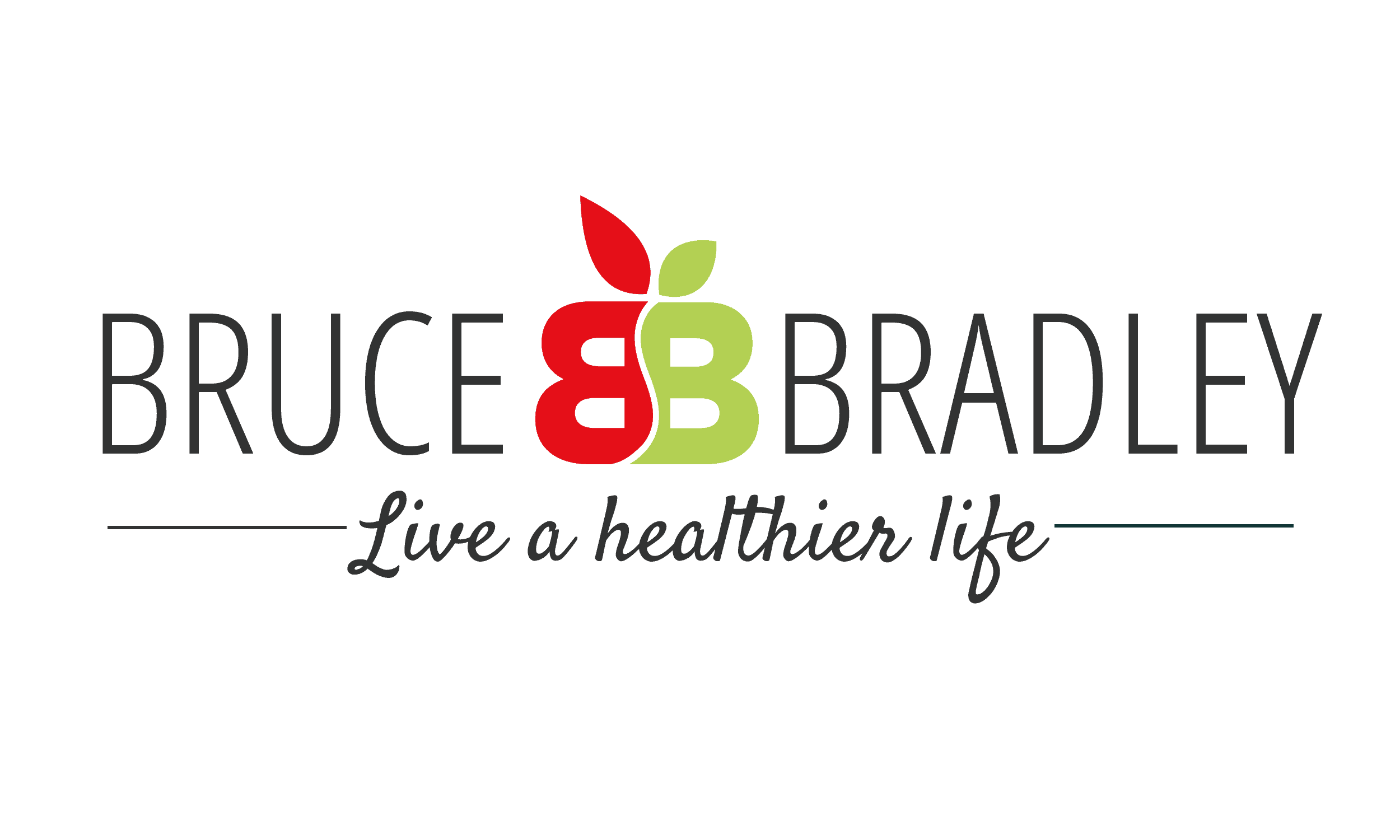
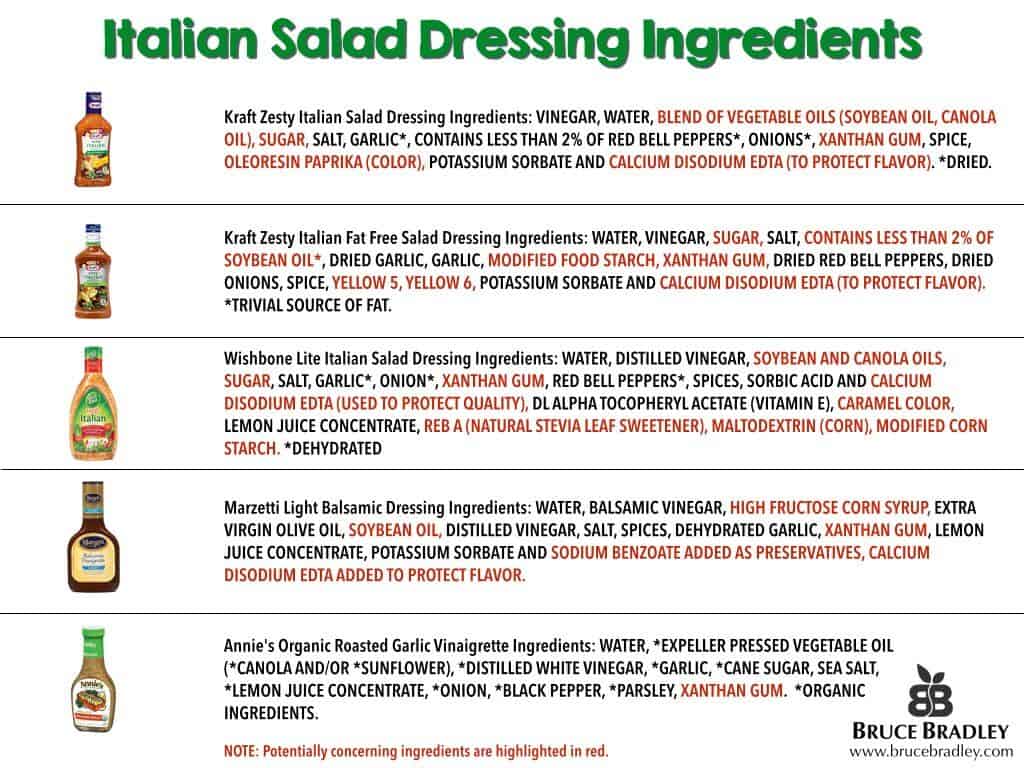
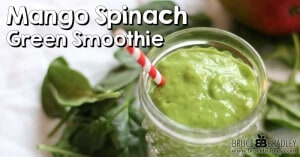
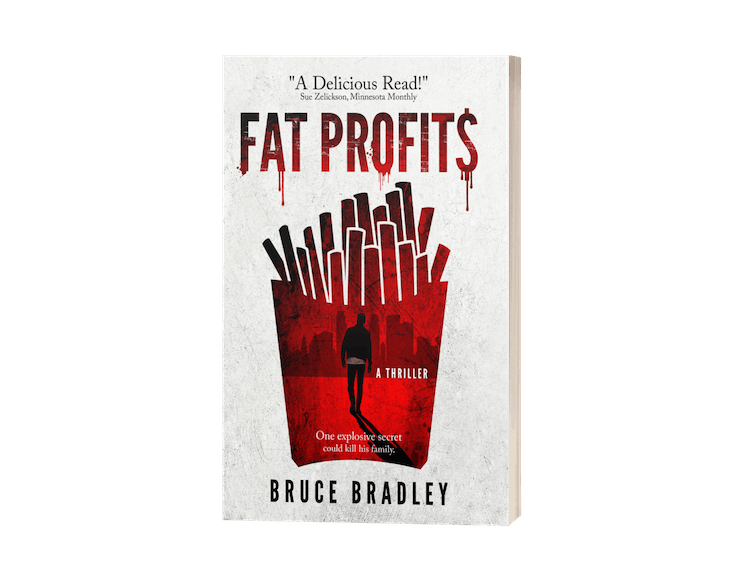
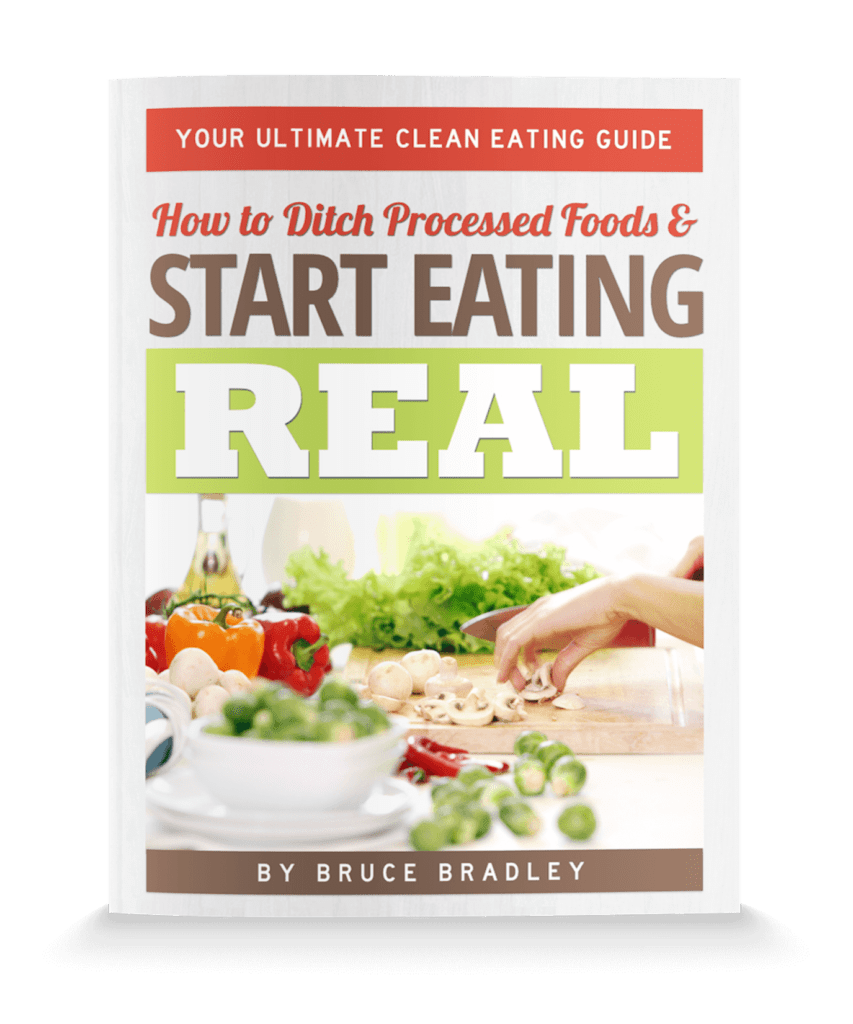
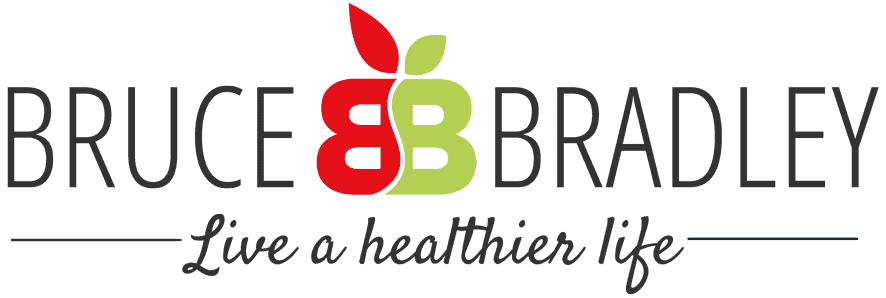
One Response
Olive oil, red wine vinegar, freshly ground black pepper. It’s all most salads need! If I’m having a salad with fruit in it, I skip the black pepper or I may use a bottled raspberry vinaigrette , but only because I don’t eat them very often, and I haven’t found a great recipe for a raspberry vinaigrette … YET!